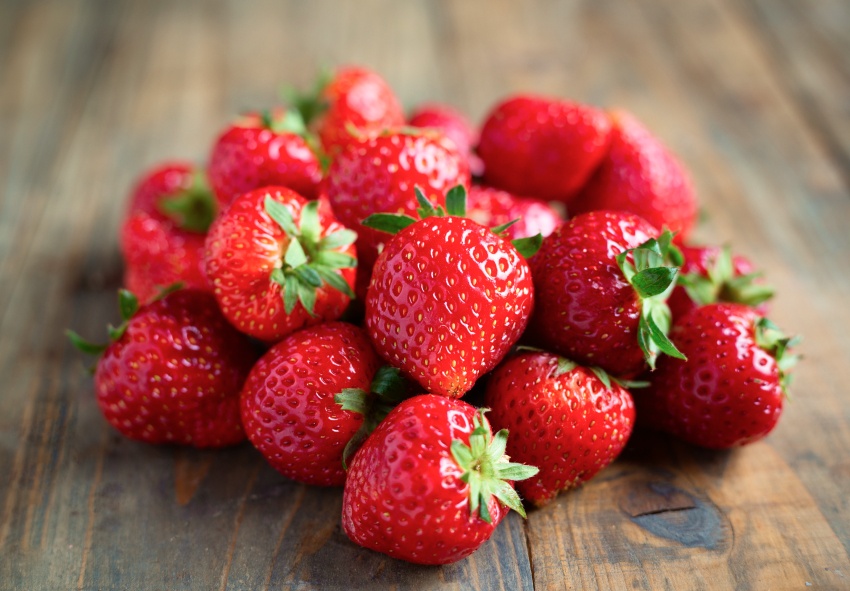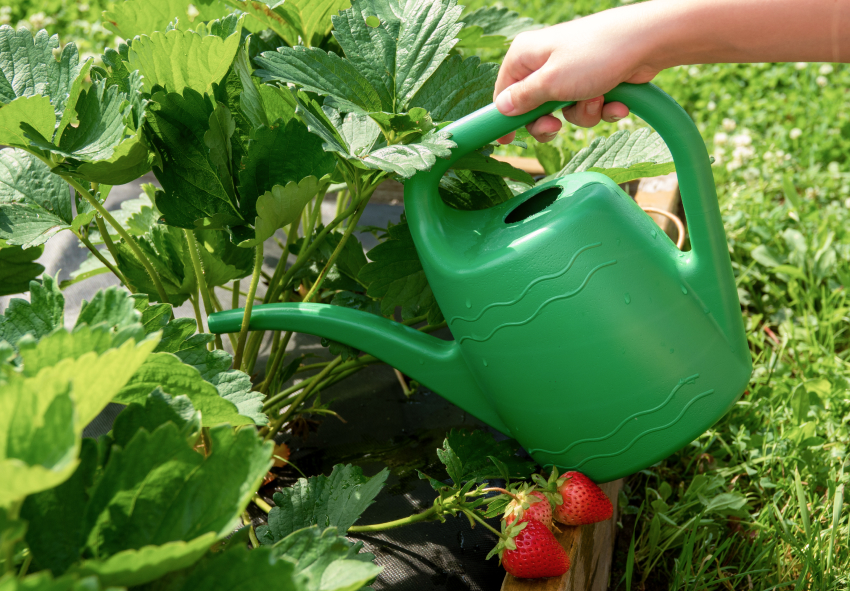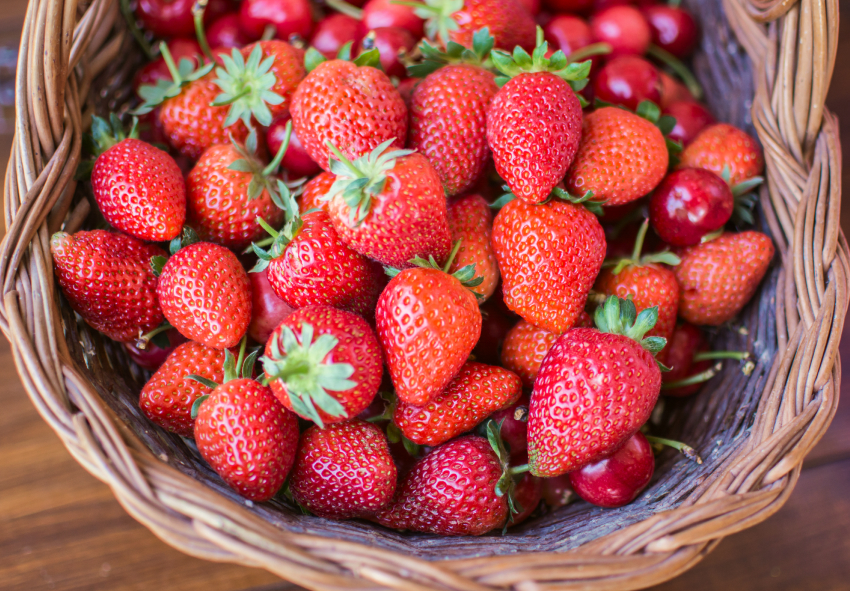Strawberries are among the most popular fruits for home gardeners, prized for their sweet flavor, versatility, and ease of cultivation. Whether grown in containers, hanging baskets, or traditional garden beds, strawberries can thrive with the right care. Our gardening blog is a perfect place to find everything you need to know to successfully plant and grow strawberries in your garden.
Choosing the Right Strawberry Variety

Selecting the best strawberry variety for your garden is the first step to a successful harvest. With different types producing fruit at varying times and rates, your choice will affect how and when you enjoy your berries. Understanding the distinctions among June-bearing, everbearing, and day-neutral strawberries helps ensure you meet your harvest goals.
June-bearing vs. Everbearing vs. Day-neutral
June-bearing strawberries produce one large harvest in early summer and are ideal for preserving. Everbearing varieties provide two smaller harvests — one in early summer and another in early fall. Day-neutral strawberries yield fruit continuously throughout the growing season, offering a steady supply.
Factors to Consider When Selecting Varieties
Choosing the right strawberry variety is crucial for a successful and satisfying harvest. Different varieties vary in flavor, growth habit, and climate adaptability. Keep these key factors in mind when selecting strawberry plants for your garden:
- Climate Adaptability: Choose varieties suited to your local climate and hardiness zone to ensure healthy growth and fruit production.
- Fruit Flavor and Size: Consider the taste profile and berry size that best fit your preferences, whether sweet, tangy, large, or small.
- Harvest Season: Decide between June-bearing, everbearing, or day-neutral varieties depending on your desired harvest timing and frequency.
- Disease Resistance: Select varieties known for resistance to common strawberry diseases to reduce the need for chemical treatments.
- Growth Habit and Space: Take into account the plant’s growth habit (runner production, spreading) and available garden space for optimal planting.
Preparing the Soil and Site
Healthy soil and proper site selection are critical for strong strawberry plants and high-quality fruit. Strawberries thrive in sunny, well-draining areas with the right balance of nutrients. Investing time in preparing your garden bed will pay off with a longer fruiting period and better plant health.
Ideal Soil Conditions for Strawberries
Strawberries prefer well-draining, slightly acidic soil with a pH of 5.5 to 6.8. Rich, loamy soil with organic matter ensures healthy root development and flavorful fruit. Avoid heavy clay soils unless well amended with compost.
Sunlight and Location Requirements
Choose a sunny location where strawberries receive at least 6–8 hours of direct sunlight daily. Full sun encourages robust growth and sweeter berries. Avoid low-lying spots where frost or standing water could damage plants.
Planting Strawberries

Planting strawberries correctly sets the stage for vigorous growth and abundant berries. Timing, spacing, and planting depth are all key factors to consider. Whether you’re planting bare-root or potted strawberries, a thoughtful approach will support strong roots and healthy crowns.
When to Plant Strawberries
Plant strawberries in early spring once the ground is workable and frost risk is low. In mild climates, fall planting is also possible for a head start. Proper timing ensures strong establishment before fruiting.
Proper Planting Technique
Plant strawberries so the crown (where roots meet leaves) sits at soil level — neither buried nor exposed. Space plants 12–18 inches apart in rows 2–3 feet apart. Water thoroughly after planting to settle the soil.
Caring for Strawberry Plants
Once planted, strawberries require ongoing care to thrive and fruit well. Watering, feeding, and mulching help support the plants throughout the growing season. Regular maintenance ensures disease prevention, larger berries, and a longer harvest window.
Watering and Mulching
Strawberries require 1–1.5 inches of water per week, especially during fruiting. Mulch with straw or pine needles to retain moisture, suppress weeds, and keep berries clean. Consistent moisture is key to juicy, full berries.
Fertilizing and Feeding
Apply a balanced, slow-release fertilizer at planting and again after the first harvest. Avoid excessive nitrogen, which promotes leafy growth over fruit. Organic compost or well-rotted manure also works well for feeding strawberries.
Seasonal Maintenance

Proper seasonal maintenance is essential to keep your strawberry plants healthy and productive throughout the year. Different seasons require specific care steps to encourage growth, prevent disease, and prepare plants for the next cycle. Here are four important seasonal maintenance tasks to follow:
- Spring Cleanup and Fertilizing: Remove old leaves and debris to prevent disease and apply a balanced fertilizer to support new growth.
- Summer Watering and Mulching: Maintain consistent moisture levels with regular watering and add mulch to conserve moisture and suppress weeds.
- Fall Renovation: Trim back runners and thin plants to improve air circulation and prepare the bed for winter.
- Winter Protection: Cover plants with straw or mulch to protect crowns from freezing temperatures and frost damage.
Managing Pests and Diseases
Strawberries can attract a variety of pests and diseases that may threaten their health and yield. Identifying problems early and taking preventative action can save your crop. With a few smart strategies, you can maintain a healthy, pest-resistant strawberry patch.
Common Strawberry Pests
Strawberries are delicious not only to gardeners but also to a range of garden pests. Knowing which pests are most likely to target your plants can help you take preventative action and protect your harvest. Below are the most common pests to watch out for:
- Aphids: Small, soft-bodied insects that cluster on new growth and undersides of leaves, sucking sap and potentially spreading viruses.
- Slugs and Snails: These pests feed on ripe fruit and foliage, leaving behind large holes and slimy trails — especially in damp conditions.
- Spider Mites: Tiny arachnids that cause stippling and webbing on leaves, leading to leaf discoloration and reduced plant vigor.
- Strawberry Root Weevils: Larvae feed on roots, causing plants to wilt or die, while adult weevils chew on leaves, creating notched edges.
- Thrips: Minute insects that can damage flower buds and developing fruit, leading to scarring and misshapen berries.
Preventing and Treating Diseases
Good air circulation and avoiding overhead watering reduce fungal diseases like powdery mildew and gray mold. Remove infected leaves promptly and use fungicides only as a last resort. Rotate crops to avoid soil-borne pathogens.
Harvesting and Storing Strawberries

Knowing when and how to harvest strawberries ensures the best flavor and shelf life. Proper picking techniques prevent damage and extend fruit freshness. Learning the right storage methods will help you enjoy your harvest longer, whether fresh or frozen.
When and How to Harvest
Pick strawberries when they’re fully red and firm for best flavor. Harvest in the morning when temperatures are cooler. Handle berries gently to avoid bruising.
Proper Storage Techniques
Proper storage is key to maintaining the freshness and flavor of your harvested strawberries. Following the right steps can extend their shelf life and keep them delicious for longer. Here are some essential storage techniques to keep your strawberries fresh:
- Refrigerate Immediately: Store strawberries in the refrigerator as soon as possible to slow down ripening and prevent spoilage.
- Keep Dry Until Use: Avoid washing strawberries before storage; moisture can promote mold growth. Wash them just before eating or using.
- Use Breathable Containers: Store strawberries in shallow containers lined with paper towels, allowing airflow and absorbing excess moisture.
- Remove Damaged Berries: Check for and discard any bruised or moldy strawberries to prevent them from affecting the rest.
- Freeze for Long-Term Storage: For extended storage, freeze strawberries by washing, drying, and spreading them out on a tray before transferring to airtight bags.
Conclusion
Growing strawberries at home is a rewarding experience, yielding delicious fruit throughout the season. With the right variety, soil, and care, even beginner gardeners can enjoy abundant harvests. Explore our online store to find top-quality strawberry plants and gardening supplies to get started today!
Frequently Asked Questions (FAQs) about Growing Strawberries
1. When is the best time to plant strawberries?
The best time to plant strawberries is in early spring, once the soil is workable and before the last frost. This allows the plants to establish strong root systems before the hot summer months. In warmer climates, fall planting is also an option for an earlier harvest.
2. How much sunlight do strawberries need?
Strawberries require at least 6 to 8 hours of direct sunlight per day to produce a healthy and flavorful crop. Full sun exposure encourages vigorous growth and high fruit yield. Avoid shady areas, as lack of sunlight can lead to poor flowering and lower berry production.
3. Can I order Holland strawberry in your online store?
Yes, you can order strawberry seeds directly from our online store Dutch-bulbs.com. We offer high-quality, nursery-grown Holland strawberry varieties known for their exceptional sweetness and productivity.
4. How often should I water strawberry plants?
Water strawberries consistently, providing about 1 to 1.5 inches of water per week. During flowering and fruiting, moisture is critical—avoid letting the soil dry out completely. Use drip irrigation or water at the base of the plant to reduce the risk of leaf diseases.
5. How can I protect strawberries from pests naturally?
Use straw mulch to deter slugs and prevent fungal diseases. Encourage beneficial insects like ladybugs and lacewings to control aphids. You can also use floating row covers to protect against birds, weevils, and other common pests while allowing sunlight and rain to reach the plants.
Published: 27.05.2025
